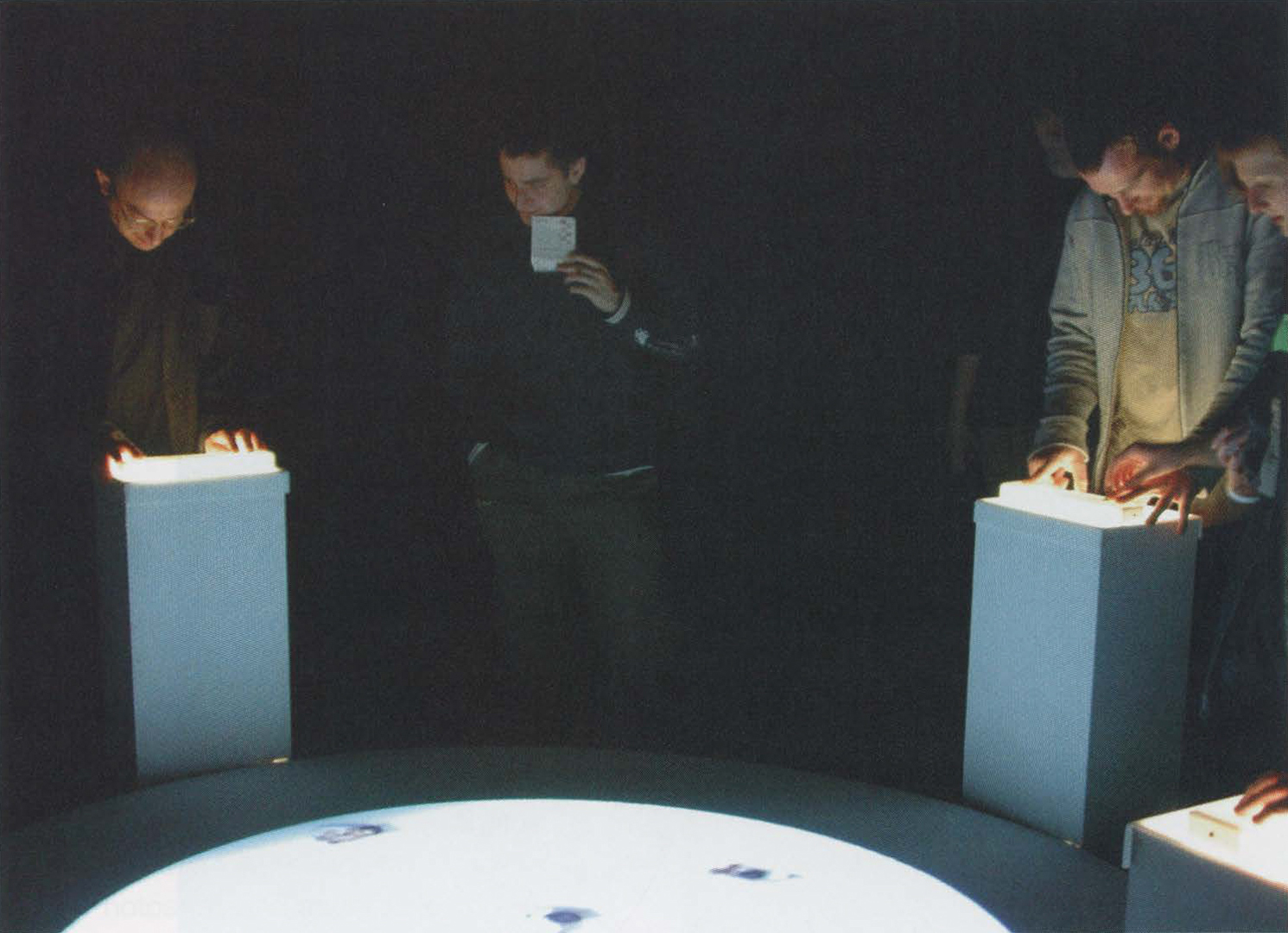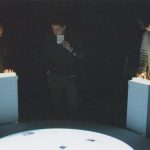Sharon Younger: Heartbeats
Artist(s):
Title:
- Heartbeats
Exhibition:
Medium:
- Art installation
Size:
- 10' x 12' x 12'
Category:
Artist Statement:
This interactive installation uses participants’ pulses to create virtual life. Four heart-rate sensors are stationed around a circular surface. A fetal figure is projected next to each station. When a user connects to one of the stations, the figure is “born”: it starts to pace and progresses one step with each heartbeat. Each station features a different figure with a characteristic movement of its own. The figure’s way of moving alters according to the participant’s pulse: when the pulse is rapid, the figure takes larger steps and moves more quickly, and when the pulse is slow, the figure takes small steps and its way of moving is more subdued.
When several users connect simultaneously, the figures they bring to life move toward each other, and their paths may cross. In order for the figures to meet, they have to get to the crossing point at the same time. To achieve that, some participants must accelerate their pulses by breathing rapidly or moving, and others must slow down their pulses by taking slow breaths and trying to relax.
When figures meet, they are released from the control of the pulse and from their own repetitive movement. They find consolation in each other’s company, but their bonding is temporary. Following their brief encounter, they resume their repetitive movement. When one of the participants withdraws, the corresponding figure fades away, subsequently resuming its initial position next to the station.
Heartbeats creates virtual life in a virtual human mini-lab. The existence of this small community depends on the will and cooperation of the participants, who must be emotionally and physically involved “with all their hearts.”
Technical Information:
Heartbeats uses four simplified ECG units that were built especially for the installation. Participants’ pulses are measured and transmitted to the computer. The computer analyzes this information so that it can control the movies featuring the figures, move the figures in the right direction, and calculate their position in order to create encounters.
This installation was created at the Camera Obscura School of Art and supported by Showlogix, makers of show control software.






